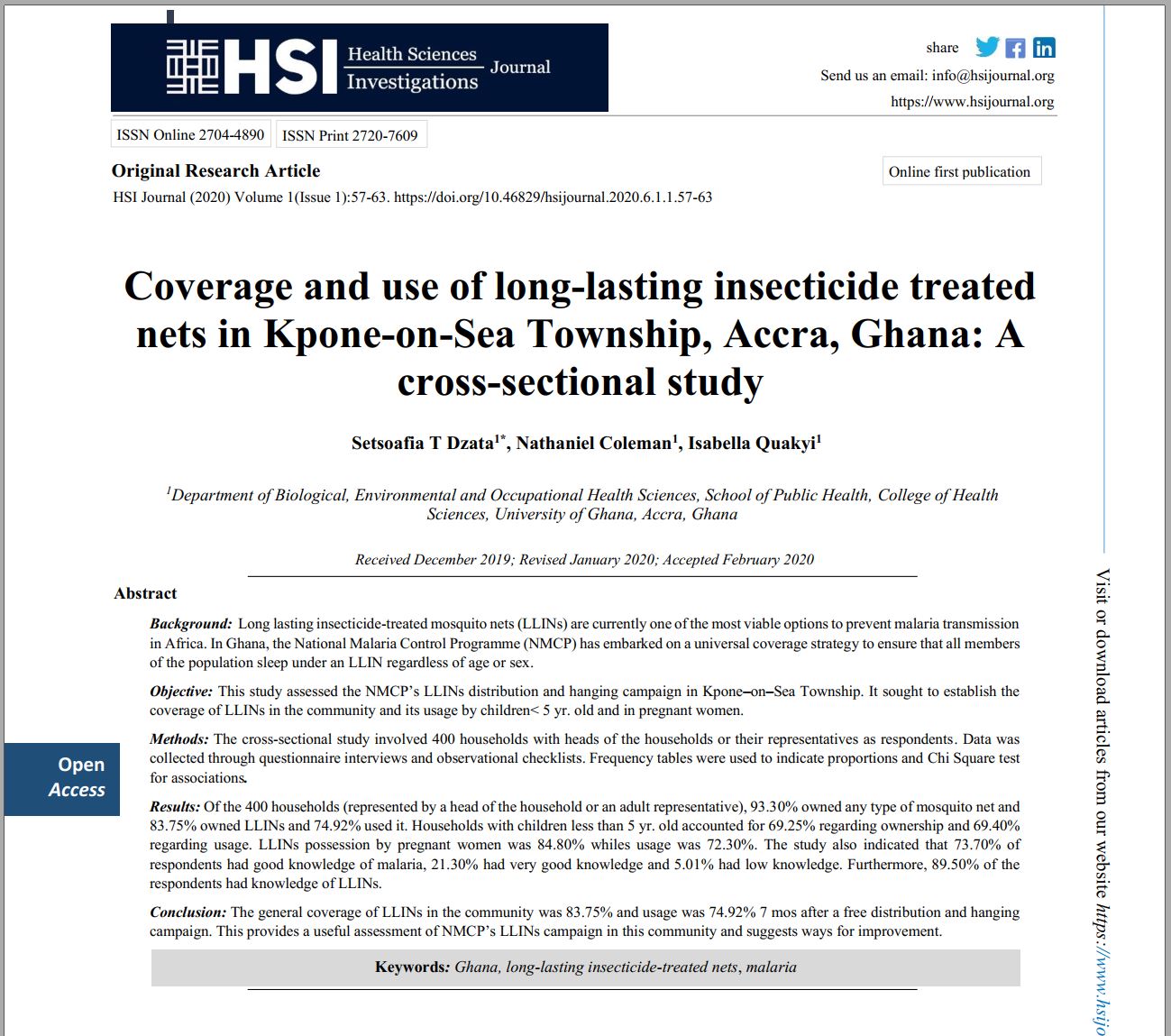Coverage and use of long-lasting insecticide treated nets in Kpone-on-Sea Township, Accra, Ghana: A cross-sectional study
Use of long-lasting insecticide treated nets in Kpone Township, Ghana
Abstract
Background: Long lasting insecticide-treated mosquito nets (LLINs) are currently one of the most viable options to prevent malaria transmission in Africa. In Ghana, the National Malaria Control Programme (NMCP) has embarked on a universal coverage strategy to ensure that all members of the population sleep under an LLIN regardless of age or sex.
Objective: This study assessed the NMCP’s LLINs distribution and hanging campaign in Kpone–on–Sea Township. It sought to establish the coverage of LLINs in the community and its usage by children< 5 yr. old and in pregnant women.
Methods: The cross-sectional study involved 400 households with heads of the households or their representatives as respondents. Data was collected through questionnaire interviews and observational checklists. Frequency tables were used to indicate proportions and Chi Square test for associations.
Results: Of the 400 households (represented by a head of the household or an adult representative), 93.30% owned any type of mosquito net and 83.75% owned LLINs and 74.92% used it. Households with children less than 5 yr. old accounted for 69.25% regarding ownership and 69.40% regarding usage. LLINs possession by pregnant women was 84.80% whiles usage was 72.30%. The study also indicated that 73.70% of respondents had good knowledge of malaria, 21.30% had very good knowledge and 5.01% had low knowledge. Furthermore, 89.50% of the respondents had knowledge of LLINs.
Conclusion: The general coverage of LLINs in the community was 83.75% and usage was 74.92% 7 mos after a free distribution and hanging campaign. This provides a useful assessment of NMCP’s LLINs campaign in this community and suggests ways for improvement.


